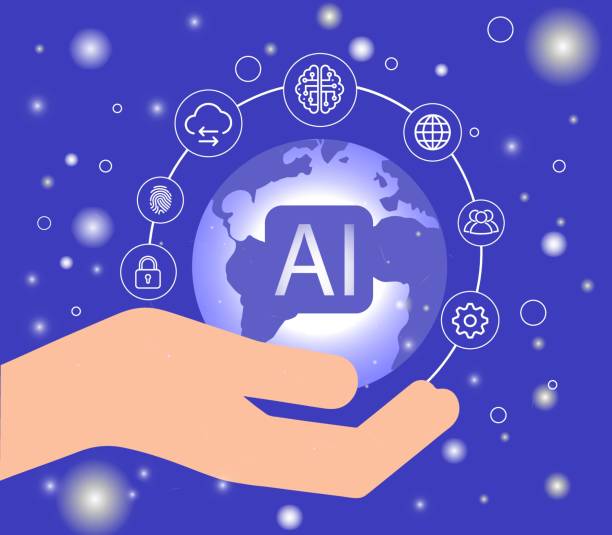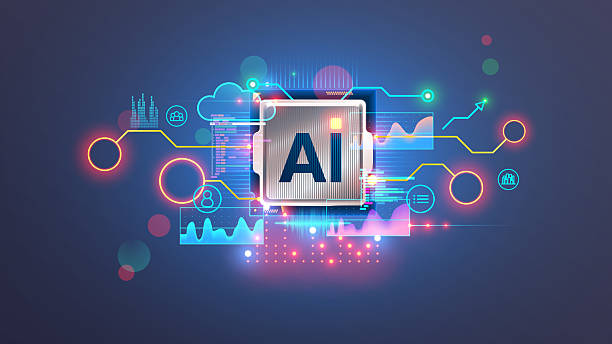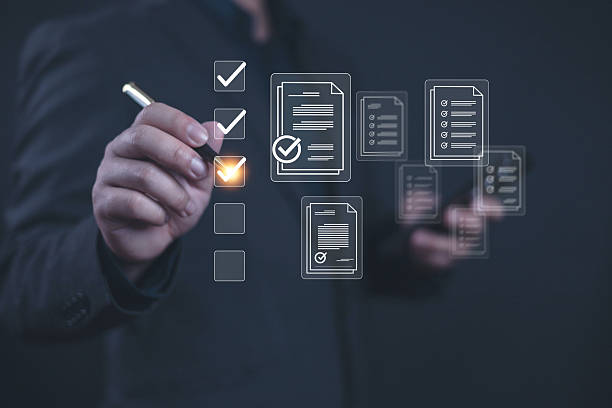What is Artificial Intelligence Robot? A Simple and Understandable Definition
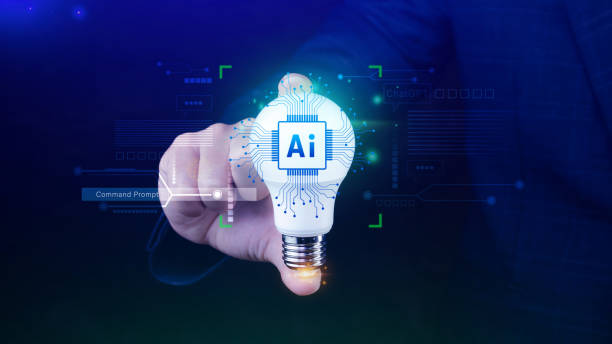
In today’s world, the term #Artificial_Intelligence (AI) is increasingly heard.
But when this artificial intelligence is integrated with the world of robotics, a phenomenon called Artificial Intelligence Robot is created.
In simple terms, an AI robot is a robot that uses artificial intelligence algorithms to perform complex tasks and make intelligent decisions.
These robots, unlike traditional robots that only execute pre-determined commands, are able to interact with their environment, learn from their experiences, and adapt their behavior based on new conditions.
In this way, an AI robot can provide effective and efficient performance in various situations, such as dangerous environments, repetitive spaces, or even in interacting with humans.
An AI robot can perform a wide range of tasks, including sorting packages in a warehouse, assisting surgeons in the operating room, or even accompanying and caring for the elderly.
These robots use sensors, cameras, and other data collection tools to gather information about their surroundings and then use artificial intelligence algorithms to process this information and make the necessary decisions.
For example, an AI robot designed for autonomous driving can use its cameras and sensors to scan its surroundings, identify other vehicles, pedestrians, and obstacles, and then use AI algorithms to plan its route in a way that avoids collisions and reaches its destination.
This ability to learn and adapt makes the AI robot a powerful tool for solving complex problems and improving human lives.
Are you annoyed by losing customers who visit your site to buy?
Rasaweb is your specialized solution for having a successful online store.
✅ Significantly increase your online sales
✅ Create trust and professional branding with customers⚡ Get free advice from Rasaweb experts!
Main Components of an AI Robot: Recognizing Key Elements
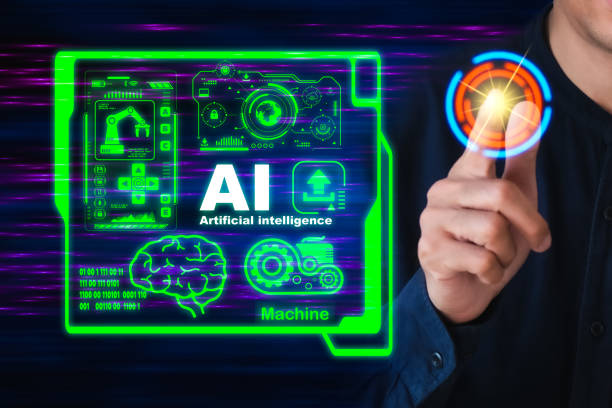
An AI robot consists of several main components that, by working together, enable it to function intelligently and independently.
These components include:
Sensors Sensors allow the robot to collect information about its environment.
This information can include images, sounds, temperature, pressure, position, and speed.
There are different types of sensors, each designed to collect a specific type of information.
For example, cameras are used to collect images, microphones to collect sounds, and lidar sensors to measure distance.
Processors Processors are the thinking brain of the robot.
They process the information collected by the sensors, make the necessary decisions, and send the necessary commands to the actuators.
The processing power required for a robot depends on the complexity of the tasks it needs to perform.
Simple robots may use a small microcontroller, while complex robots may use a powerful computer with multiple graphics processors.
Actuators Actuators allow the robot to interact with its environment.
These actuators can include motors, pumps, arms, wheels, and other mechanical devices.
The type of actuators used in a robot depends on the tasks it needs to perform.
For example, an industrial robot designed to assemble parts may use high-precision robotic arms, while a robot designed to explore Mars may use wheels and complex navigation systems.
Software and Algorithms Software and algorithms are the software brain of the robot.
They provide instructions that tell the robot how to process information, make decisions, and interact with its environment.
Artificial intelligence algorithms, such as machine learning and neural networks, allow the robot to learn from its experiences and improve its performance over time.
These components working together enable an #Intelligent_Robot to perform complex tasks and interact effectively with its environment.
The AI robot is progressing day by day and is expected to play a more important role in our lives in the near future.
Amazing Applications of Artificial Intelligence Robot in Various Industries

The AI robot is rapidly penetrating various industries and offers diverse applications.
Here are some of these applications:
Manufacturing Industry AI robots are used in the manufacturing industry to perform repetitive and dangerous tasks, such as welding, painting, and assembling parts.
These robots can work with greater accuracy and speed than humans and help increase productivity and reduce costs.
Health and Treatment In the field of health and treatment, AI robots are used in precise surgeries, patient care, and drug delivery.
These robots can help surgeons perform complex surgeries with greater precision and help nurses care for patients.
Transportation Autonomous robots are transforming the transportation industry.
These robots can automatically drive cars, trucks, and even airplanes and help reduce traffic, accidents, and air pollution.
Customer Service Chatbots using artificial intelligence can answer customer questions, solve their problems, and record their orders.
These robots can help reduce the workload of customer service staff and improve customer experience.
Agriculture Agricultural robots can be used to perform tasks such as planting seeds, harvesting crops, and spraying pesticides.
These robots can help increase productivity and reduce the use of chemical pesticides.
Finance In the financial industry, AI robots are used for fraud detection, risk management, and financial advice.
These robots can help improve financial decision-making and reduce costs.
These are just examples of the widespread applications of AI robots in various industries.
With the advancement of technology, it is expected that the applications of these robots will become more extensive and diverse in the future.
| Industry | Applications |
|---|---|
| Manufacturing | Welding, painting, assembling parts |
| Health and Treatment | Precise surgeries, patient care |
| Transportation | Autonomous cars, autonomous trucks |
Benefits of Using AI Robot: Comparison with Traditional Methods

Using an AI robot compared to traditional methods has several advantages, which are as follows:
Increased Productivity Robots can work continuously and without fatigue, so they can significantly increase productivity.
They can also perform repetitive and tedious tasks, which allows human employees to focus on more creative and strategic tasks.
Cost Reduction Robots can reduce labor, energy, and raw material costs.
They can also reduce waste and improve product quality, which leads to overall cost reduction.
Increased Safety Robots can perform dangerous and high-risk tasks, which increases the safety of human employees.
They can also work in dangerous environments, such as mines and nuclear power plants.
Improved Quality Robots can work with greater accuracy and speed than humans, which leads to improved product and service quality.
They can also reduce human errors and prevent problems from occurring.
Increased Flexibility Robots can be programmed quickly and easily to perform new tasks, which increases the flexibility of businesses.
They can also adapt to changing environmental conditions.
Improved Decision-Making AI robots can process large amounts of data and identify patterns that are not visible to humans.
This helps businesses make better decisions and improve their performance.
In general, using an AI robot can help businesses increase productivity, reduce costs, increase safety, improve quality, increase flexibility, and make better decisions.
These advantages have led to these robots being increasingly used in various industries.
Did you know that customers’ first impression of your company is your website? With a powerful corporate website from Rasaweb, multiply the credibility of your business!
✅ Exclusive and eye-catching design tailored to your brand
✅ Improve user experience and increase customer attraction
⚡ Get free consultation!
Challenges and Limitations of AI Robot: Obstacles Ahead

While AI robots offer many advantages, they also face challenges and limitations that need to be considered:
Cost Robots can be very expensive, both in terms of purchase and maintenance.
This can be a barrier for small and medium-sized businesses.
Complexity Robots can be very complex and require a high level of technical expertise to program, install, and maintain.
This can be a challenge for businesses that lack the necessary expertise.
Limitations Robots still have limitations in some areas.
For example, they cannot perform tasks that require creativity, empathy, or human judgment.
AI Robot
Ethical Problems The use of robots can raise several ethical issues.
For example, replacing humans with robots can lead to job loss.
Also, the use of robots in fields such as the military can create serious ethical issues.
Security Robots can be vulnerable to cyber attacks.
If a robot is hacked, it can be used to do malicious things.
Social Impact The widespread use of robots can have profound social impacts.
For example, it can lead to changes in the structure of the labor market and increased economic inequality.
To overcome these challenges and limitations, it is necessary to invest in research and development, workforce training, and the development of appropriate regulations.
Also, serious attention should be paid to the ethical and social issues arising from the use of robots.
The Future of AI Robot: Predicting Future Trends
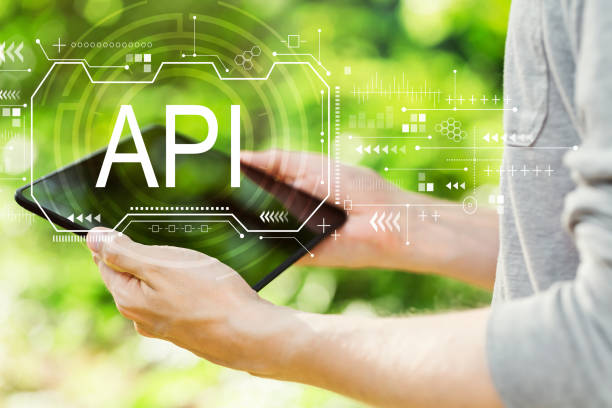
The future of AI robots looks very bright.
With the advancement of technology, these robots are expected to become smarter, more efficient, and more affordable.
Some of the future trends in this field include:
Stronger Artificial Intelligence Artificial intelligence algorithms are constantly advancing, and this will lead to the creation of smarter and more capable robots.
These robots will be able to perform more complex tasks and interact more effectively with their environment.
Deep Learning Deep learning is a branch of artificial intelligence that allows robots to learn from large amounts of data and identify patterns that are not visible to humans.
This will lead to the creation of robots that are capable of solving complex problems and making intelligent decisions.
Collaborative Robots Collaborative robots (cobots) are robots that are designed to work alongside humans.
These robots are safer, more flexible, and easier to program.
It is expected that the use of collaborative robots will increase in the future.
Internet of Things (IoT) Integrating robots with the Internet of Things (IoT) enables data collection and sharing.
This will lead to the creation of robots that are able to learn from each other and improve their performance.
Cloud Robotics Cloud robotics allows robots to be controlled and managed through the Internet.
This will lead to lower costs and increased flexibility.
New Applications With the advancement of technology, robots are expected to be used in new areas such as medicine, agriculture, customer service, and education.
AI Robot
In general, the future of AI robots is very exciting.
These robots have great potential to improve human lives and solve global problems.
Important Points in Selecting and Implementing AI Robot: A Practical Guide
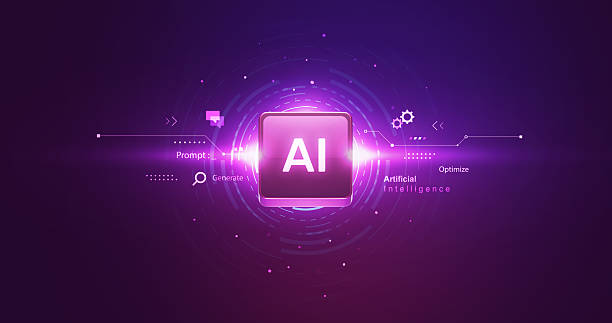
Selecting and implementing an AI robot is an important decision that should be done carefully and with planning.
Here are some important points in this area:
Determine Needs First of all, you must accurately determine your needs.
What tasks do you want to assign to the robot? What goals do you want to achieve by using the robot?
Research and Review Before buying a robot, you should do the necessary research and review different types of robots.
Compare features, prices, and user reviews.
Choose a Supplier Choose a reputable and experienced supplier.
Ask them about after-sales service, training, and technical support.
Planning Prepare a detailed plan for implementing the robot.
Specify the timeline, budget, and required resources.
Training Train your employees to work with the robot.
They should know how to program, maintain, and troubleshoot the robot.
Evaluation Evaluate the robot’s performance regularly.
Identify strengths and weaknesses and make necessary changes if needed.
Safety Make sure the robot is working safely.
Take the necessary safety measures to prevent accidents.
Flexibility Program the robot to be flexible and able to adapt to changing environmental conditions.
By following these tips, you can select and implement a suitable AI robot and benefit from its advantages.
Ethical Considerations in the Development and Use of AI Robot: Our Responsibilities
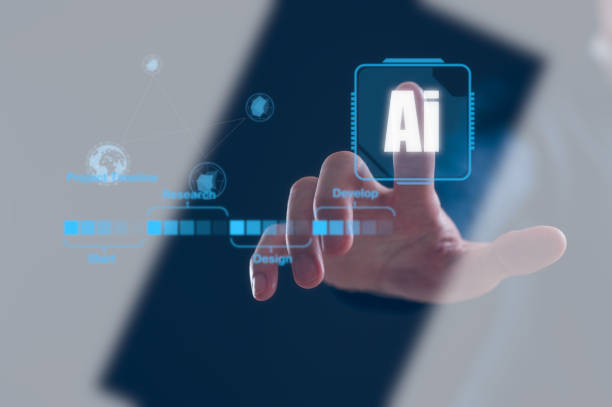
The development and use of AI robots brings with it important ethical considerations that must be addressed:
Replacing Humans The use of robots can lead to job loss.
This issue should be addressed and solutions should be provided to reduce its negative effects.
Privacy Robots can collect a lot of information about us.
This information should be used responsibly and the privacy of individuals should be protected.
Security Robots can be used to do malicious things.
The necessary security measures should be taken to prevent the misuse of robots.
Responsibility If a robot causes harm, who is responsible? Laws and regulations should be developed to determine liability in this area.
Discrimination Robots can discriminate based on the algorithms they are given.
This should be prevented and it should be ensured that robots act fairly.
Transparency There should be transparency about how robots work and the algorithms they use.
This helps people make informed decisions about the use of robots.
AI Robot
Control It should be ensured that humans are in control of robots and that robots cannot make important decisions independently.
By paying attention to these ethical considerations, the misuse of robots can be prevented and their benefits can be used responsibly.
| Subject | Ethical Considerations |
|---|---|
| Replacing Humans | Job loss |
| Privacy | Collection of personal information |
| Security | Misuse of robots |
Did you know that your company website is the first point of contact for 75% of potential customers?
Your website is the face of your brand. With Rasaweb’s corporate website design services, create an online presence that earns customer trust.
✅ Create a professional and lasting image of your brand
✅ Attract target customers and increase online credibility
⚡ Get free advice from Rasaweb experts!
A Look at AI Robot in Iran: Opportunities and Challenges

The development of AI robots in Iran faces several opportunities and challenges:
Opportunities
- Skilled Human Resources Iran has skilled and talented human resources in the fields of artificial intelligence and robotics.
- Domestic Market Iran’s domestic market for robots is very large and diverse.
- Government Support The Iranian government supports the development of new technologies, including artificial intelligence and robotics.
Challenges
- Lack of Investment Investment in research and development in the field of artificial intelligence and robotics is not sufficient in Iran.
- Technological Limitations Access to some advanced technologies is limited in Iran.
- Legal Barriers Some of the existing laws and regulations in Iran prevent the development of robots.
- Lack of Awareness Public awareness about the benefits of robots is not sufficient in Iran.
AI Robot
To overcome these challenges and take advantage of opportunities, it is necessary to increase investment in research and development, facilitate access to advanced technologies, develop appropriate laws and regulations, and increase public awareness about the benefits of robots.
By taking these measures, Iran can become one of the leading countries in the development of AI robots.
Frequently Asked Questions about AI Robot: Answers to Your Questions

In this section, we answer some frequently asked questions about AI robots:
What is the difference between an AI robot and a regular robot? An AI robot uses artificial intelligence algorithms to make decisions and perform tasks, while a regular robot only executes pre-determined commands.
Can robots replace humans? In some areas, robots can replace humans, but in many areas, humans will still play an important role.
Are robots dangerous? If robots are properly designed and used, they are not dangerous.
However, necessary safety measures must be taken to prevent accidents.
How much does it cost to buy a robot? The cost of buying a robot varies depending on its type and application.
Some robots are very expensive, while others are affordable.
How can I program an AI robot? To program an AI robot, you must be familiar with programming languages and artificial intelligence algorithms.
There are many training courses and online resources in this area.
Is the use of robots legal? The use of robots is legal in many countries, but there are some limitations and regulations.
You must be familiar with the relevant laws and regulations.
What will the future of robots be like? The future of robots looks very bright.
These robots are expected to become smarter, more efficient, and more affordable and to be used in new areas.
AI Robot
We hope these questions and answers have helped you better understand AI robots.
FAQ
| Question | Answer |
|---|---|
| What is an AI robot? | A robot that uses artificial intelligence capabilities to understand the environment, reason, learn, and make decisions to perform complex tasks independently. |
| What is the main difference between a regular robot and an AI robot? | AI robots can learn and adapt to their environment, while regular robots usually operate based on fixed and pre-determined programming. |
| What areas do AI robots have applications in? | In areas such as industry (production lines), medicine (robotic surgeries), services (customer support, smart vacuum cleaners), exploration (space and underwater), and entertainment. |
| How do AI robots learn? | They acquire new skills through Machine Learning and Deep Learning algorithms, by analyzing big data and identifying patterns. |
| Can AI robots have emotions? | Currently, no. They can identify or simulate emotions, but they do not have the real experience of emotions like humans. |
| What are the most important benefits of using AI robots? | Increased productivity, reduced human error, performing dangerous or repetitive tasks, and providing innovative and efficient services. |
| What challenges exist in developing AI robots? | The need for abundant and high-quality data, complex algorithms, ethical issues, cyber security, and high research and development costs. |
| Are AI robots dangerous to humans? | Not if safe design principles and ethical regulations are followed. Concerns are more about social and economic impacts such as changes in the labor market. |
| What is an example of an AI robot in everyday life? | Smart vacuum cleaners (such as Roomba) that automatically map and clean the house, or smart voice assistants (such as Siri and Alexa). |
| How is the future of AI robots predicted? | They are expected to become smarter, more autonomous, and capable of more complex interaction with humans, and to play a more prominent role in industry, medicine, transportation, and everyday life. |
And other services of Rasa Web advertising agency in the field of advertising
Smart Website Development: A dedicated service for online growth based on custom programming.
Smart Content Strategy: Professional optimization for managing campaigns using attractive user interface design.
Smart Conversion Rate Optimization: A fast and efficient solution for managing campaigns with a focus on attractive user interface design.
Smart Link Building: A creative platform to improve customer behavior analysis with precise audience targeting.
Smart Sales Automation: A creative platform to improve campaign management with marketing automation.
And more than hundreds of other services in the field of internet advertising, advertising consulting and organizational solutions
Internet Advertising | Advertising Strategy | Advertorial
Resources
What is an artificial intelligence robot?
,How AI robots are transforming the future of jobs?
,Artificial intelligence
? Are you ready to transform your business in the digital world? Rasaweb Afarin, a leading digital marketing agency, specializing in providing comprehensive solutions including SEO optimized website design, SEO, content marketing and social media management, is ready to help you on the path to growth and achieving maximum visibility.
📍 Tehran, Mirdamad Street, next to the Central Bank, Kazerun Jonoubi Alley, Ramin Plaque 6

